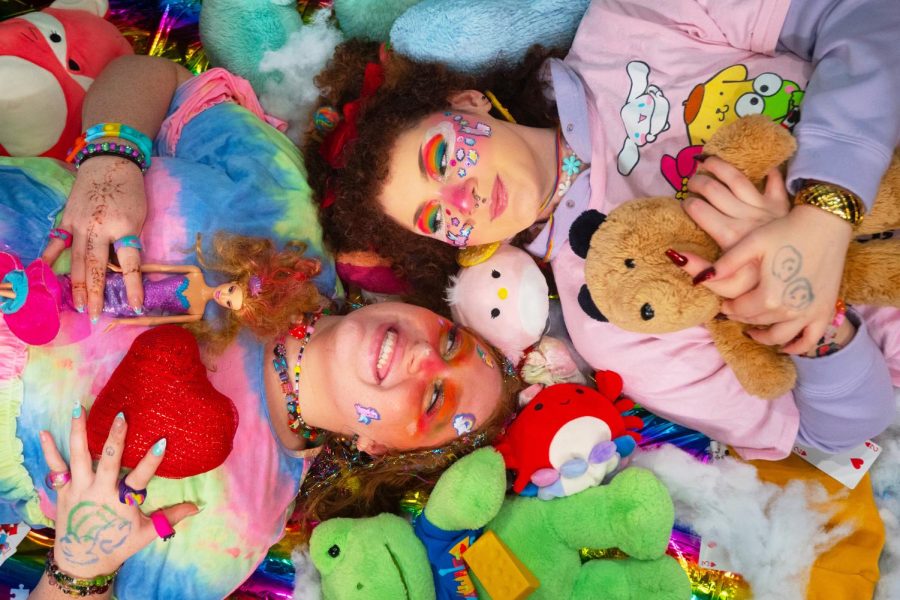Grow Up!
Shrinky Dinks, friendship bracelets, the Scholastic Book Fair, Lisa Frank, Winnie the Pooh, Bratz, Legos, Hello Kitty. Oh, grow up.
Or don’t. Simple childhood pleasures and a touch of consumerism came together to form the foundation of our generation. The older gen Z gets, it seems, the closer we come to reviving the core elements of our childhood. And, as research suggests, taking the time to re-experience as adults everything that gave us joy as children may actually benefit our emotional and social well-being.
Cybr.grl, an alternative fashion influencer and Youtuber, epitomizes kidcore with an abundance of rainbow accessories and clothes that cover her head-to-toe.
Kidcore is one of many “core” aesthetics which started in the 2010s, featuring beloved cartoon characters, full-color saturation, dream-like memories, and playful escapism. “Kidcore often gets confused with decora fashion,” said cybr.grl in her Youtube video What Is Kidcore? Are Kidcore And Decora The Same Thing? Decora is a type of fashion similar to kidcore, which originated in Japan in the 90s and focuses on self-expression through accessories.

Megan Catherine Rose, university researcher and author of the 2020 study Child’s Play? Exploring the Significance of Kawaii for Decora and Fairy-Kei Fashion Practitioners in Harajuku through a Case-Focused Analysis concluded through their study on Decora fashion that “In this specific context, the use of kawaii [cute things] by adults is shown to have the potential to bring a sense of creativity, happiness and play to their everyday lives.” According to Rose, Decora practitioners focus on what ideas do and do not bring them joy.
Carefree, child-like fashion isn’t new to pop culture – icons like Melanie Martinez, JoJo Siwa, and now Olivia Rodrigo have embraced nostalgic touches such as bright colors, beads, stickers, and playful themes in their careers. “Just wear whatever you want to, have fun with fashion!” said cybr.grl.
The Oregon State University Craft Center, located in the Student Experience Center basement, provides students with the opportunity to reconnect with the crafts they loved as kids, like tie-dye, watercolor, or even just gluing pom-poms and googly eyes together. And it’s popular, with hundreds of students visiting the center daily.
Ange Purviance (they/them), Assistant Director of the Craft Center, came from a background in Kindergarten to 8th-grade art education. “I thought when I was walking away from K through eight, I’d have to give up the ‘look what I made!’ [from students], and I didn’t – it still happens,” said Purviance, adding that kindergarteners and college students share a core interest of “wanting to just. . . play with things while talking to people. That’s cross-generational, that’s no matter what age they are. It’s enjoyable.” According to Purviance, getting back into crafting has multiple benefits, including gaining a sense of belonging, being able to process difficult experiences, practicing mindfulness through process-oriented activities, and forming lasting friendships.
“Those kinds of things are important. Tie-dye is very important. Anything that can trigger [those] happy memories. It’s not always treated as important, but it is,” Purviance said. “It helps ground you, and it helps [you] not have to take everything so seriously all the time.”
We hold these pieces of our younger selves with us, and they give us hope on rainy, dull adult days.




Alex • Mar 1, 2023 at 10:59 pm
I took these photos
DAMChic.Editor • Apr 6, 2023 at 12:01 pm
So sorry about that! Captions are updated